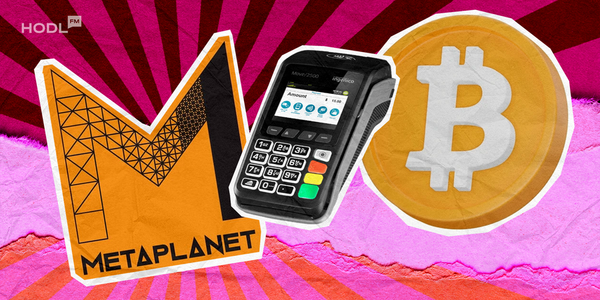Have you heard the news? On-chain data shows Coinbase profited at least $1 Million or 460 ETH after attackers corrupted the Curve Protocol. Thereby causing an imbalance in how the protocol determines the value of assets.
As a result, a trading bot saw this imbalance and executed an arbitrage by making a 570 ETH validator fee payment to Coinbase Exchange. For this reason, Coinbase prioritised all transactions by the bot in syphoning funds from the Curve Finance pool. Now several experts hold Coinbase accountable, and demand to know why the company has not returned the funds. According to Alchemix, one of the pools that lost millions of funds, the exchange is holding stolen money.
Read more: Grayscale Wins the Court Battle Against SEC

The Coinbase Hack and Its Aftermath: Financial Implications
Security breaches are not uncommon in the cryptocurrency space. A report by DEFI security firm Beosin indicates crypto has already lost $656 million to cryptocurrency hacks in the first half of 2023.
Meanwhile, the Curve exploit led to unintended earnings of approximately $1 million for Coinbase and has raised significant ethical questions about the role of digital assets platforms in protecting customer funds.
This article will provide a comprehensive overview of the Curve Finance hack, how the MEV Bot reaped profit from the hack, why Coinbase made a profit, the plight of the victims, Coinbase’s ethical responsibility, the broader ethical dilemma, potential solutions, and lessons for the crypto industry.
In July, an attacker targeted Curve Finance and stole $73 million, causing a temporary disruption in asset valuation. This malicious act resulted in substantial losses, leaving affected users in despair. While some stolen funds were recovered, not all victims received full compensation. What is most concerning is that Coinbase, a prominent cryptocurrency exchange, chose not to return the unexpected profit it earned from this incident to the victims.

Technically speaking
The Curve Finance exploiter took advantage of a smart contract bug on particular liquidity pools on the protocol. One of the pools that fell victim to this attack belonged to the Alchemix crypto lending platform. Before the exploit on Curve, this pool contained 4,822 alETH and 7,259 ETH. According to a spokesman from Alchemix, the attacker drained most of the tokens in the pool and left behind 3,856 alETH and 1 ETH.

At this point, it bears mentioning that traders on liquidity pools swap from one token to another using an exchange rate based on the ratio of the pool’s assets. After the hack, a massive imbalance between the pool’s ETH and aiETH created a lifetime arbitrage opportunity. Thereby opening up a loophole for experienced traders to purchase aiETH at a high discount. During the incident, an MEV trading bot picked up the signal and purchased the remaining alETH in the pool and sold them off for another derivative called frxETH. Later on, swapping the frxETH for ETH.
Coinbase’s hack aftermath
Coinbase’s Windfall Profit
Coinbase’s $1 million windfall profit stemmed from the trading bot that seized an opportunity to exploit Miner Extractable Value (MEV) during the chaos following the hack. To prioritize its transaction, the MEV trading bot paid an enormous fee of 570 ETH to an Ethereum blockchain validator. This fee, one of the largest ever paid for MEV, was received by Coinbase. This transaction effectively ensured the bot’s trade went through.
However, it is important to note that the trading bot netted a measly 43 ETH while the lion’s share went to the validator, Coinbase. This unusually high transaction fee ensured that the validator was going to prioritise all of the bot’s transactions, thereby front-running anyone who would have been ahead of it in the trade.
The Victims’ Plight
One of the Coinbase hack aftermath implications is the plight of victims who lost their funds. The victims of the Coinbase hack have faced both financial and emotional turmoil, with some of them claiming they lost their life savings through the incident. Despite bounty hunters and whitehat hackers recovering some of the funds through various channels, Coinbase refused to return the profit it earned. Some of the individuals who lost their life savings now feel abandoned by the exchange.
Requests for Coinbase to address software defects that enabled scammers to access their accounts went unanswered, compounding their distress. This has led most of them to question the Moral responsibility of the platform’s customer support towards user protection.
A bone of contention has taken centre stage as cryptocurrency users went on to question the ethical responsibility of the exchange towards its customers.

Alchemix has come out several times claiming Coinbase is still holding stolen funds despite the majority of the hackers having returned what they stole in exchange for bounty. Unfortunately, the exchange claims there are no legal requirements for Customer compensation resulting from what it terms ‘was not a breach of Coinbase security’ Meanwhile, the situation has highlighted the state of things between crypto users, blockchain trustless ethos and the lack of any alternative for Coinbase victims to get their funds back.
Eric Rosen, a crypto law expert representing hundreds of victims who lost their funds in previous years through Coinbase said:
The platform is trying to become a financial institution without creating the right supporting infrastructure.
Industry Ethics: The Ethical Dilemma and Regulatory Compliance
Coinbase exchange is at the centre of an epic industry ethics dilemma, how does it profit from a security hack that harmed its customers? The exchange may suffer a huge threat to its reputation and credibility if it decides to keep the money. Customers feeling that their exchange prioritizes making a profit by sacrificing customer protection could have long-lasting negative implications on the platform.

More Info:
- CFTC’s Order against Three DeFi Protocols
- LBRY’s Fight Against the SEC: A Closer Look at ETF Appeal Process
Coinbase can address this challenge by reimbursing the $1 million to Alchemix. In addition, the exchange has to improve its security standards and ensure nothing like this happens in future. At least, the platform can create an emergency fund for compensating victims of hack-related incidents. If the exchange feels unjustified to reimburse the funds, the best thing to do is liaise with regulators on how to compensate customers in the event of such a breach.
Lessons for the Crypto Industry
Cryptocurrency stakeholders should come together in times like this to establish clear measures and industry standards on how to deal with hacks. These measures must highlight proactive measures for supporting and compensating any victims of a hack. In addition, industry participants like Coinbase should recognize the need for ethical responsibility in the cryptocurrency industry. This means prioritizing the needs of its customers and protecting itself from reputation damage resulting from such incidents.
Conclusion
The Curve Finance incident and the subsequent exploit on Alchemix derivative pools have revealed the sophisticated world of crypto. However, as the sector continues to evolve, experts are betting on robust security measures and regulatory oversight to protect crypto funds from attackers. Meanwhile, we are yet to see whether Coinbase will do what’s right by putting in place robust user protection measures and returning the $1 million.

Disclaimer: All materials on this site are for informational purposes only. None of the material should be interpreted as investment advice. Please note that despite the nature of much of the material created and hosted on this website, HODL FM is not a financial reference resource and the opinions of authors and other contributors are their own and should not be taken as financial advice. If you require advice of this sort, HODL FM strongly recommends contacting a qualified industry professional.




